America’s Most Common Venomous Snakes & How to Identify Them
Travis Olander 11.17.23
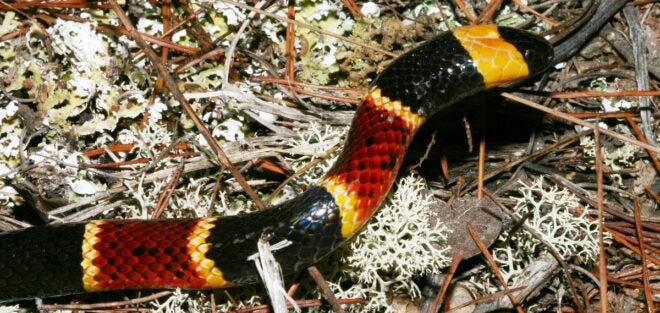
We recently covered key facts on venomous snake bites in the U.S., including the fact that up to 8,000 people are bit each year. While the chance of actually dying from a venomous snakes is exceedingly low – around 0.06% – it’s better to simply not get bit in the first place, right? Except all across the continental U.S., dozens of venomous snake species share space with campers and hikers. Four main groups, twenty-two recognized species, and 37 subspecies, though some argue there are many more; up to 83, by some counts. Many of these snakes are difficult to spot from afar, and many more are naturally aggressive at a passersby who strays to close. Here are America’s most common venomous snakes, where they live, and how to spot them. First up is the one you’re most likely to encounter – and you’ll hear it before you see it, if you’re lucky.
Medical Coverage on AllOutdoor
- Nonvenomous Water Snake or Cottonmouth?
- Never Have a Severe Poison Ivy Rash Again
- AllOutdoor Review: My Medic TFAK – Micro Trauma First Aid Kit
- AllOutdoor Review: My Medic Bite & Sting Med Pack – Ready Collection
Venomous Snakes – Rattlesnakes
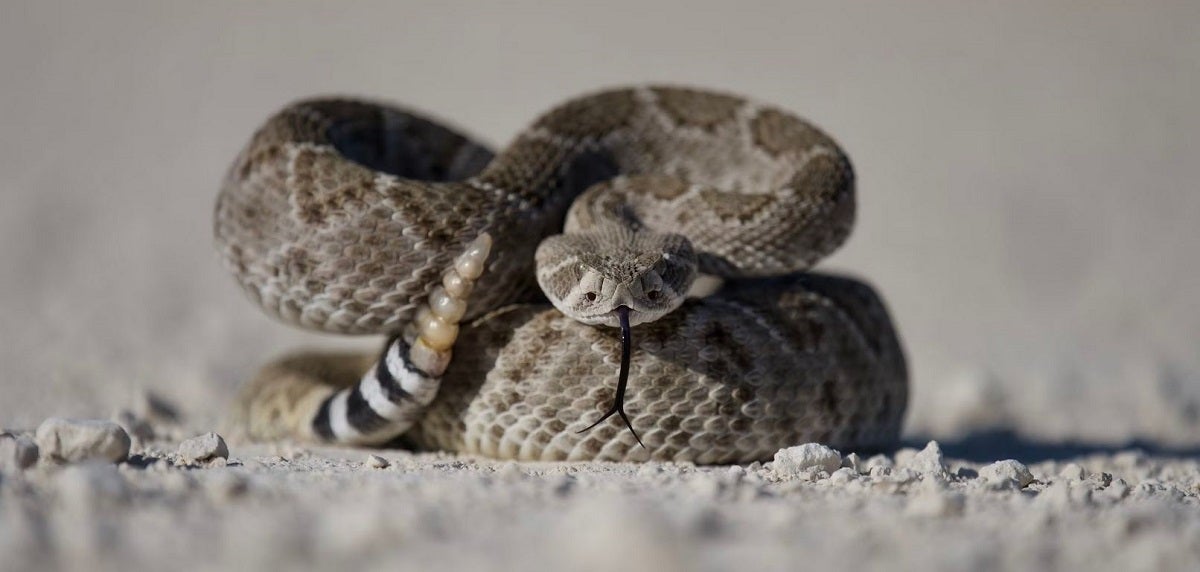
Rattlesnakes make up the majority of venomous snakes in the United States. They’re present in virtually all 48 lower states, reaching as far north as New Hampshire on the east coast, Oregon on the west coast, and Montana in the Midwest. You’re most likely to encounter rattlers in the lower Midwest and southern states, though. Over a dozen species live in California and New Mexico, with about a half-dozen occupying neighboring Arizona, Nevada, Utah, and Texas.
In these hot, arid climates, rattlesnakes tend to avoid the bright midday sun, and instead prefer to hide between dawn and dusk. As the sun sets and temperatures cool, rattlesnakes in these regions become active. This is when you, hiker or camper, should be weary. April through October is a particularly active season for rattlers, which also happens to be the most active seasons for outdoor activities.
Regardless of the species, all rattlesnakes are easily identified by their unique tails, which are made of hollow scales and produce the unmistakable sound that earned them their name. These snakes will warn a predator – or you, if you stray too close – by shaking their tails, which produces a signature rattling noise as the scales strike each other. Although colors and patterns vary, all rattlesnakes share similar features. Their scales feature tan, brown, burnt orange, and earth tones, spotted with black diamonds or ovals that range from dark brown to black. Some species, like the Sonoran and Prairie rattlers, have marks with white outlines.
Other uniquely colored variants include the Arizona Black Rattlesnake, which has a primarily black, marbled color, and the Banded Rock and Great Basin Rattlesnakes, which both have white scales contrasted with black stripes. Rattlesnakes like to hide among rocks and gravel, woodpiles, and sand – all common features among southern hiking trails and campsites.
Venomous Snakes – Copperheads
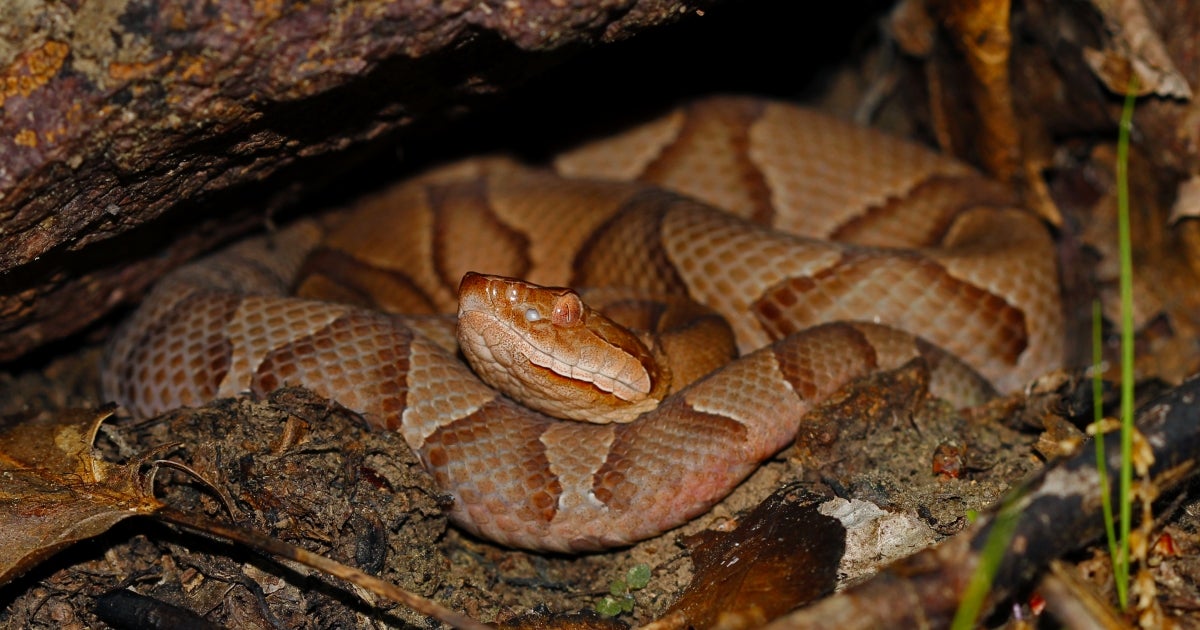
Copperhead snakes get their name from their remarkable colors: They have tan, peach, or brown bodies with deep, copper-toned triangular or hourglass markings that run from their heads to their tails. Some Eastern Copperheads can be found with deep red or wine-colored markings. Copperheads primarily live in the southeast, with populations concentrated in Oklahoma, Missouri, Arkansas, Texas, and Alabama. But some species live as far north as New York, and the Southern Copperhead (pictured above) can be found as far west as Nevada.
Copperheads prefer wooded areas and semi-aquatic environments. They blend in perfectly with dead leaves, where they like to hide during the day. In the lower states, Copperheads are commonly found near creeks and rivers. In higher altitudes, where temperatures can dip, they can be found basking on rock faces and gravelly areas. Because Copperheads like to hunt birds and lizards, they can also be found hiding in low tree branches.
This species is perhaps the most common suburban venomous snake in America. Copperheads can be frequently found hiding under sheds, campers, and decks, or between trash cans and in windows wells. In spite of their proximity to humans, Copperheads pose the least risk to people: They have the least potent venom of America’s dangerous snakes, and some who practice in the field of antivenom argue whether Copperhead bites even require specific treatment.
Venomous Snakes – Cottonmouths
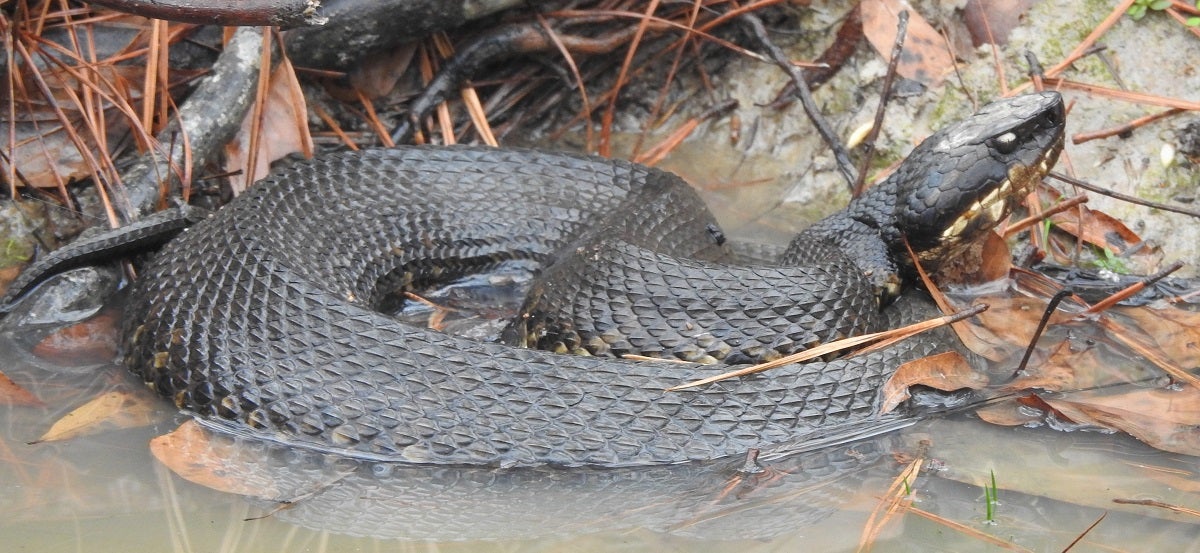
The Cottonmouth is also commonly called the Water Moccasin, or Swamp Moccasin. The Cottonmouth is one of the world’s few aquatic snakes: It’s a deft swimmer and be frequently seen wriggling along the surfaces of lakes, rivers, and swamps in the southern U.S. The Cottonmouth family comprises two species: The Florida Cottonmouth which, aptly, lives in Florida, and the Northern Cottonmouth, which can be found along the coastal and wetland areas of Texas, Louisiana, Mississippi, Alabama, Georgia, South and North Carolina, and Virginia.
Both species share similar features: They display either subdued brown and tan scales with black banded markings, or all-black bodies, like the Florida Cottonmouth shown above. They can occasionally be spotted with deep reddish and copper hues with wide, curved bands, causing them to be mistaken as Copperheads.
Because of their aquatic nature, Cottonmouths are almost exclusively found wherever there’s water – including man-made features. They can be found in reservoirs, drainage pipes, and sewers, neighborhood retention ponds, golf courses, and canals. Cottonmouths can also grow incredibly large, with some species found on eastern shores growing as long as 6 feet. They’re incredibly fast swimmers, too. Thankfully, despite their speed and size, Cottonmouth snakes are actually quite calm. They will rarely strike at a human unless stepped on or picked up and, given the chance, they’ll usually retreat in your presence unless cornered.
Venomous Snakes – Coral Snakes
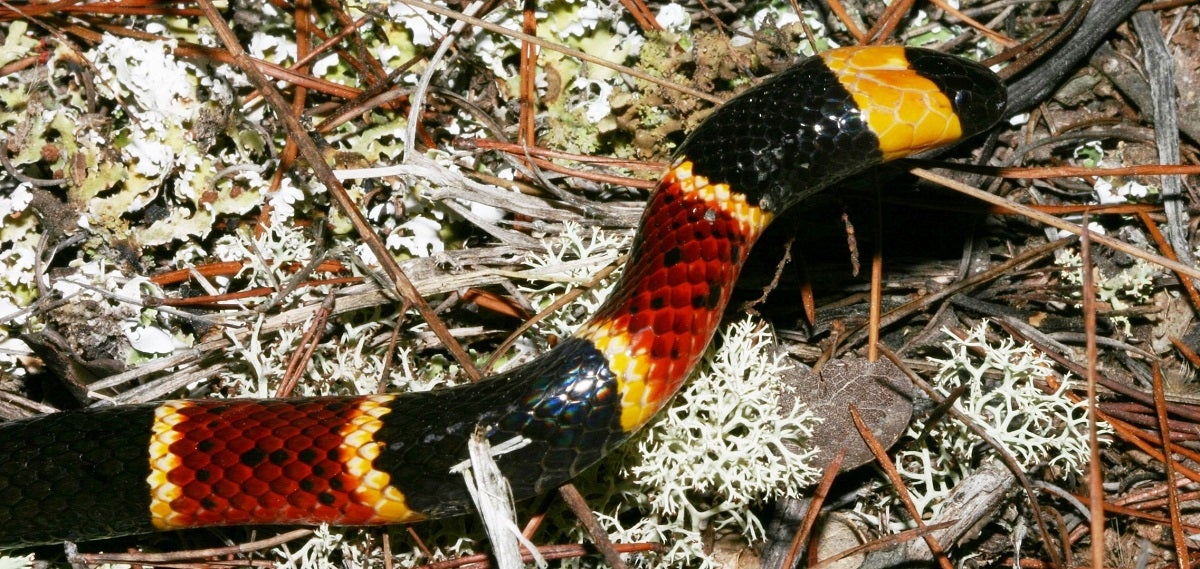
The Coral Snake is America’s most dangerous serpent, a cobra boasting vibrant colors meant to warn those who’d otherwise dare to get near it. The Coral Snake’s venom contains a potent neurotoxin that attacks transmitters that control the body’s muscles, which can quickly lead to paralysis, respiratory failure, and heart failure. Those who survive a bite may face permanent muscle weakness or disability.
Just 4 to 5 milligrams of Coral Snake venom is lethal to an adult, and large snakes can deliver up to 20 mg of venom in a single bite. Although the Coral Snake contributes the fewest bites of all venomous snakes each year, it is statistically likely to cause the most deaths: Up to 10% of bites are fatal, and no antivenom exists to improve the odds of survival.
Thankfully, the Coral Snake is both rare and docile. This species is only found in coastal plains ranging from North Carolina to Florida and eastern Louisiana. The Coral Snake prefers a specific environment of drained, sandy soil and open, flat ground interspersed with grassy vegetation. The Coral Snake is, as seen above, easy to spot: Its colors consist of a repeating pattern of thin, yellow bands separating equally sized black and red segments. The Coral Snake also has a mimic, the Scarlet Kingsnake.
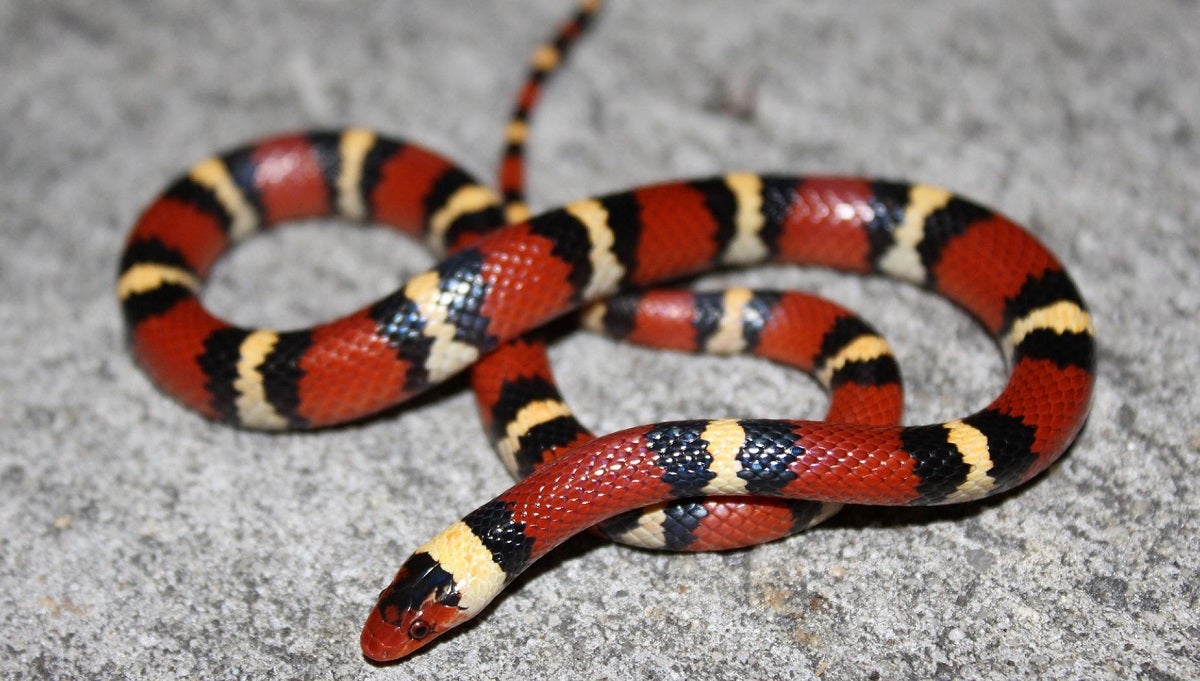
The Scarlet (pictured) displays a nearly identical color pattern, with one key differentiator: Its yellow bands are always adjacent to two black bands. Snakes like to find warmth when the sun goes down, and they can sometimes seek a cozy place to hide in boots, bags, and tents. Streamlight’s new ProTac 2.0 is a nifty lil’ flashlight, perfect for camping and checking to make sure critters haven’t invaded your space.